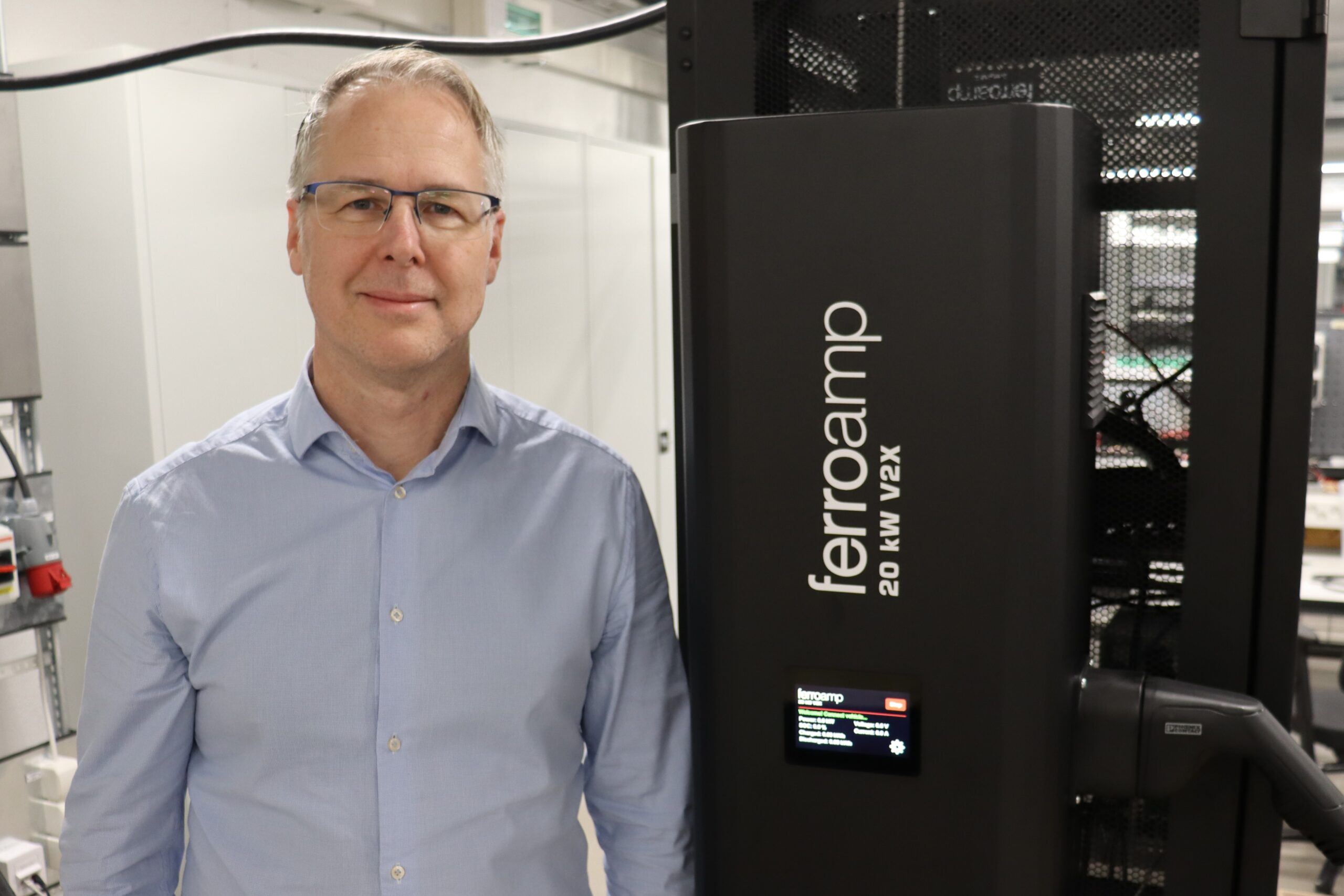
Ferroamp has succeeded in implementing bidirectional charging with several common electric car models and is now proceeding with field tests. It is an important step towards a new cost-effective solution for vehicle-to-grid (V2G). Ferroamp’s solution makes it possible to use the EV battery to contribute to both the electricity supply in the house and the stability of the electricity grid.
“Ferroamp’s DC grid provides the opportunity to simplify bidirectional charging and make electric cars an integral part of the property’s electrical system. This means that the electric car could be used for a variety of functions, such as support services or as a back-up in the event of a power outage,” says Björn Jernström, CTO and founder of Ferroamp.
A key issue in the development of V2G is the conversion between the direct current in the electric car and the alternating current in the electricity grid. It is a complex process where grid codes, certifications and different types of requirements must be taken into account depending on how the capacity of the EV battery is to be used in the grid. If the converter is on the car, it adds weight and higher production cost. A wallbox that is equipped with a converter instead risks becoming an expensive solution for the customer.
With the Ferroamp system, you can use a simpler DC/DC charger that is connected to the system’s DC grid. The conversion then takes place in EnergyHub, which is the inverter in the Ferroamp system that can also be used for PV and energy storage. Gridcodes and certifications for the electricity grid are then already in place. Another advantage of the DC charger is that you can bypass the car’s on-board charger, which otherwise limits the speed of charging.
In the tests carried out by the company, electric cars of various brands have been used with good results. However, there is still a lot of work to be done before the solution reaches the market.
“The most important thing now is that car manufacturers become clearer about how their cars can be used for V2G. They also need to implement the standardized protocols that exist for V2G on cars in series production,” says Björn Jernström.
The new solution will now be field-tested within the development project that Ferroamp is running together with Polestar, CTEK, Chalmers University of Technology and Göteborg Energi.
The solution will also be tested in Turku as part of the EU project RESPONSE, which focuses on innovative solutions for sustainable cities.
Dela nyheten
News